The best winter hiking pants are highly breathable softshell pants that prevent the accumulation of perspiration when hiking, snowshoeing, climbing/mountaineering, or even ski touring in winter. They’re made with woven nylon or polyester that is warmer and more windproof than normal three-season hiking pants and are treated with an exterior DWR coating to help them repel water. Many softshell pants have features that can be used for multiple winter sports while others are more hiking-specific. The fit also varies by activity: climbing-style pants tend to run slim while pants that are good for hiking/snowshoeing are roomier and more easily layered. Popular features include a buried/integrated belt providing for hipbelt and climbing harness compatibility, zippered side vents, zippered pockets, and ankle adjustability. Be sure to read our FAQ below about how to choose the best softshell winter pants for your needs.
Here are the 10 best softshell winter hiking pants that we recommend.
1. REI Activator 3.0 Softshell Pants
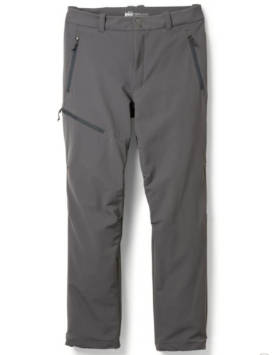
2. KUHL Klash Pants
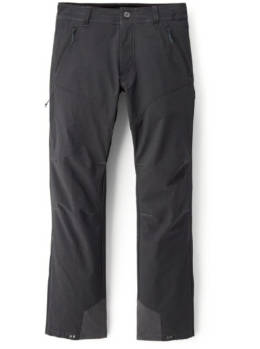
3. Arc’teryx Gamma Soft-Shell Pants
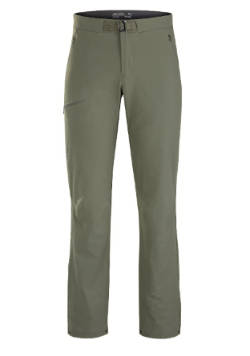
4. Mountain Equipment Ibex and Chamois Pants
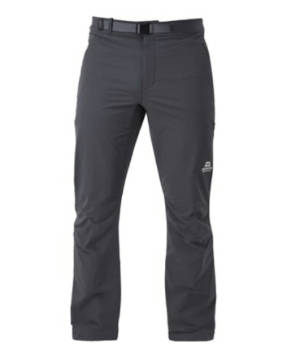
5. Mountain Hardwear Chockstone Alpine Pants

6. Rab Ascendor AS Soft-Shell Pants

7. Marmot Scree Soft Shell Pants
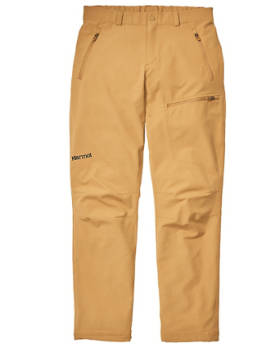
8. Outdoor Research Cirque II Softshell Pants

9. Patagonia Terravia Alpine Pants
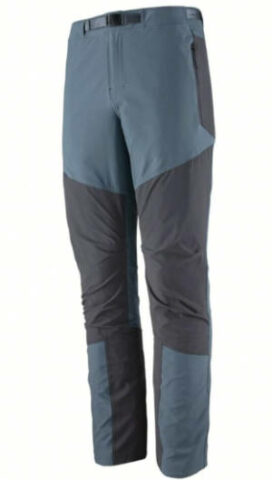
10. Norrona Falketind Flex1 Pants

Softshell Winter Hiking Pants – FAQ
What are the best winter hiking pants?
Many experienced winter hikers prefer softshell winter pants because they’re simpler to use than wearing rain pants over a pair of long underwear. Softshell pants are also more form-fitting and don’t make any noise. The problem with rain pants and long underwear is that it can be difficult to vent your rain pants or take off your long underwear without first removing your rain pants and boots. Softshell pants are breathable enough, meaning that your sweat will evaporate through them if you start to warm up and perspire.
Are softshell pants good for snow?
Softshell pants are good for snow because they have a DWR coating on the exterior that repels water and they’re highly breathable so you don’t overheat. Hiking in snow or snowshoeing requires a lot of energy and it’s easy to overheat and perspire. You want to avoid getting too warm and sweating because it will wet your clothing and reduce its ability to insulate you.
Are softshell pants waterproof?
Softshell pants are far more breathable than the waterproof rain pants that some hikers wear, so you’ll stay cooler and perspire less when working hard when hiking up mountains or snowshoeing. While they have an external DWR repellent coating for enhanced rain resistance, they are not waterproof or as windproof as hard shell rain pants. We recommend carrying both softshell pants and rain pants on cold-weather hikes, the latter for rain and wind protection, as well as added warmth when layered over the softshell pants.
Are softshell pants windproof?
Softshell pants are more windproof and warmer than regular hiking pants, but they’re designed to be highly breathable and let some wind through. If you need protection from the wind, we’d recommend layering a pair of wind pants or rain pants over a pair of softshell pants when you need added wind protection.
Should you wear a baselayer under softshell pants?
You can wear a baselayer (long underwear) under softshell pants, but it’s often not necessary except on extremely cold days. Softshell pants are warmer than regular hiking pants and usually sufficient to keep you warm when you’re actively hiking or snowshoeing. If you need additional warmth because you’re being chilled by the wind or because you’re standing still and not moving and generating heat, you can warm up by wearing a pair of rain pants over your softshell pants. Also, if you wear a baselayer under softshell pants and find yourself overheating, it’s very difficult to delayer without taking off your boots and pants, unless your baselayer long underwear has side zips and is removable without requiring that you get undressed.
How are softshell hiking pants different from ski pants?
Ski pants are usually much heavier, bulkier, and warmer since there is so much start and stop activity involved especially if you’re skiing at a resort with chair lifts. many ski pants also have internal gaiters which are hot and awkward to use when hiking and snowshoeing.
Why do softshell pants have a buried or integrated belt?
A buried or integrated pants belt loops around your waist like a regular belt but is covered with fabric around the back and sides of the pant. This makes the belt compatible with a climbing harness or a backpack hipbelt. When climbing higher mountains, you may be required to rope-in with a climbing harness.
Why do softshell pants have zippered pockets?
Softshell pants have zippered pockets that are usually located in front of the pants and are positioned so they can be easily accessed even if you’re wearing a climbing harness. Zippered pockets are more streamlined than regular pockets and less likely to interfere with gear hanging from a climbing harness.
Why do some softshell pants have ankle cuffs?
Some softshell pants have a built-in ankle cuff on the inside of the legs to provide crampon protection when climbing, backcountry skiing, or winter hiking. The ankle cuff isn’t as substantial as a high gaiter and doesn’t replace wearing them, but can be a useful convenience for winter use, especially if you want to use the same pants for ski touring.
Why do softshell pants have articulated knees?
Articulated knees are baggier than the knees in regular pants and provide more freedom of movement especially for climbing.
What are gusseted softshell pants?
Gussetted pants have added fabric panels, usually triangular, that add more width to the crotch, making it easier to raise your knee when taking large steps or climbing vertical surfaces.
SectionHiker is reader-supported. We only make money if you purchase a product through our affiliate links. Help us continue to test and write unsponsored and independent gear reviews, beginner FAQs, and free hiking guides.
